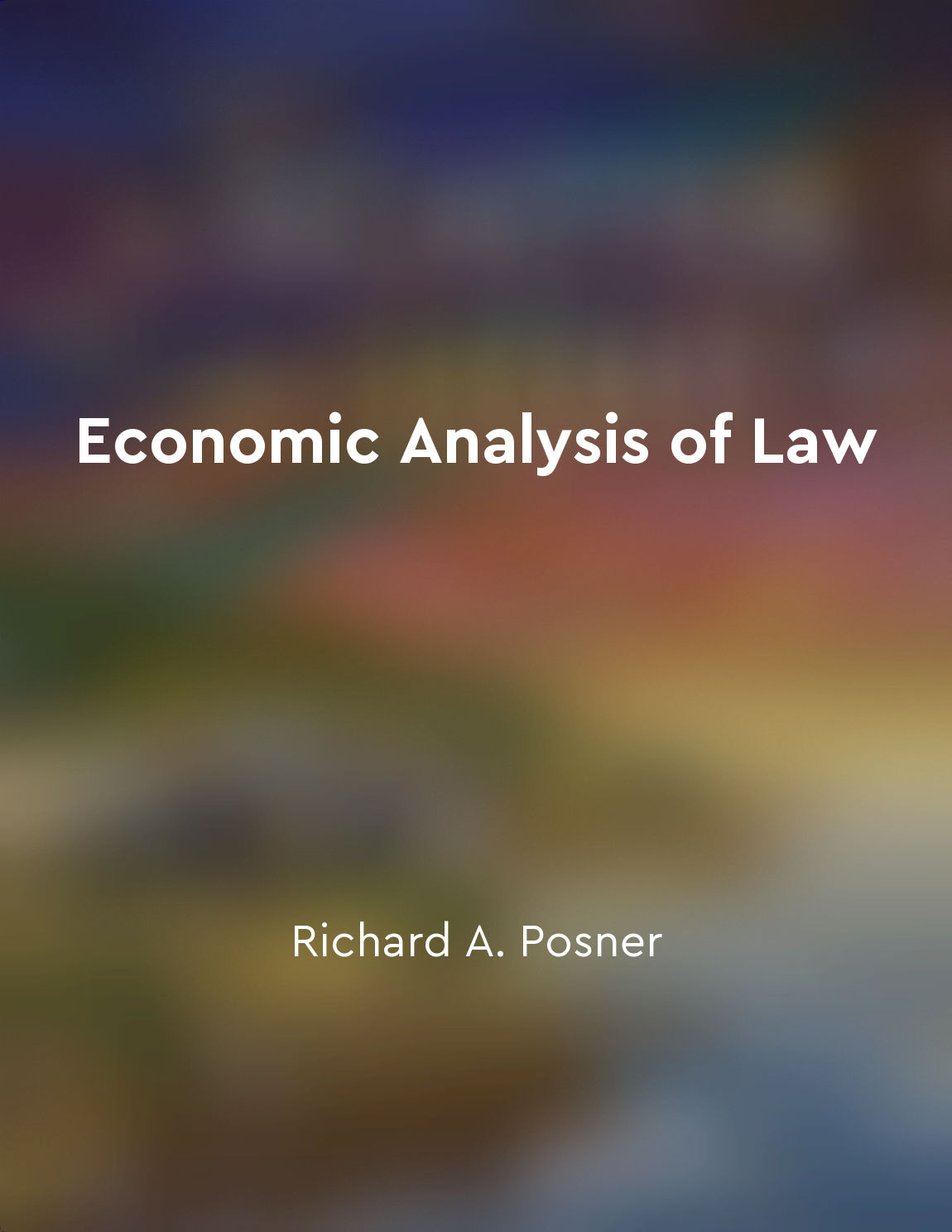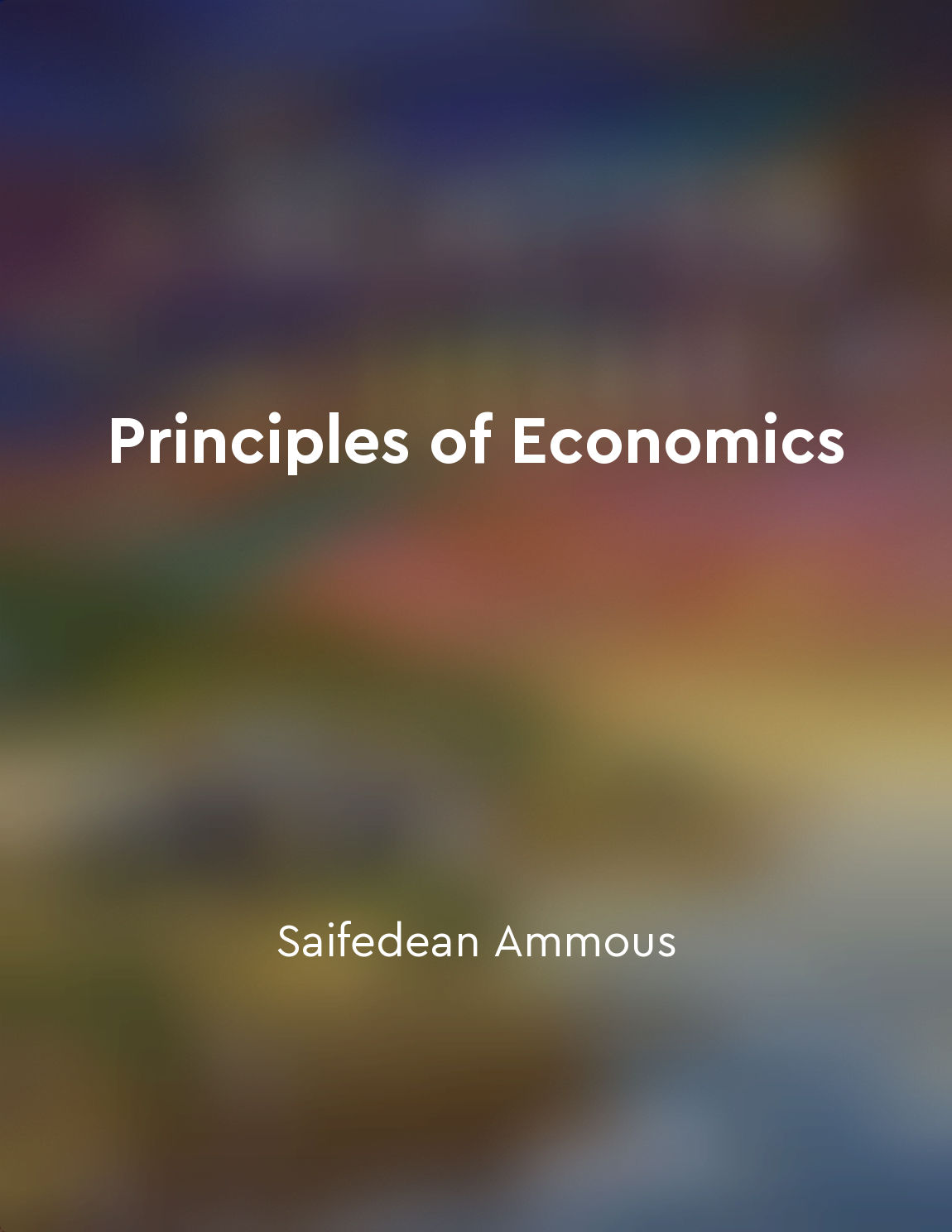Public goods are nonexcludable and non-rival in consumption from "summary" of Public Finance by Harvey S. Rosen
Public goods are distinct from private goods in that they possess two key characteristics: nonexcludability and non-rivalry in consumption. Nonexcludability means that individuals cannot be effectively excluded from using the good, even if they do not pay for it. In other words, it is difficult to prevent people from benefiting from a public good once it is provided. This is because public goods are generally available for everyone to use, regardless of whether they have contributed to its provision. Non-rivalry in consumption refers to the fact that one person's consumption of a public good does not reduce the amount available for others to consume. In other words, the consumption of a public good by one individual does not diminish the ability of others to also consume that good. This stands in contrast to private goods, where consumption by one person necessarily precludes consumption by another. The combination of nonexcludability and non-rivalry in consumption leads to certain economic implications for public goods. Because individuals cannot be excluded from using the good, there is a free-rider problem where people may choose not to contribute to its provision, assuming that others will bear the cost. This can result in underprovision of public goods, as individuals have an incentive to consume the good without paying for it. Furthermore, the non-rivalrous nature of public goods means that they are not efficiently provided by the market, as private firms have no way to capture the value of the good and charge individuals for its use. This leads to a situation where public goods are typically provided by the government or other public entities, as they are better equipped to overcome the free-rider problem and ensure the provision of these goods.- The unique characteristics of public goods make them a distinct category in economic analysis, with important implications for the role of government in providing and funding these goods. By understanding the nonexcludability and non-rivalry in consumption of public goods, policymakers can better design mechanisms to ensure the efficient provision of these goods for the benefit of society as a whole.
Similar Posts
Regulatory agencies should prioritize consumer welfare
The primary objective of regulatory agencies is to promote consumer welfare. This principle is rooted in the belief that regula...
The limitations of state governments
The powers delegated by the proposed Constitution to the federal government are few and defined. Those which are to remain in t...
Economic theories can be biased
Economic theories are often presented as objective truths, but in reality, they can be biased. This bias can stem from various ...
Measures for promoting inclusive growth
Measures for promoting inclusive growth refer to policies and strategies aimed at ensuring that the benefits of economic growth...

Efficient legal institutions enhance social welfare
The central idea here is that the design and functioning of legal institutions have a significant impact on the overall well-be...
The Federal Reserve manages the US money supply
The Federal Reserve, often simply referred to as the Fed, plays a crucial role in the United States economy by overseeing and i...

Unemployment rates fluctuate
Unemployment rates fluctuate due to various factors such as changes in economic conditions, government policies, and technologi...
Economic policies influence market outcomes
Economic policies have a significant impact on the outcomes we observe in markets. These policies are put in place by governmen...
Exploiting informational asymmetries is common
When one party in an economic transaction possesses more information than the other, a situation known as informational asymmet...

